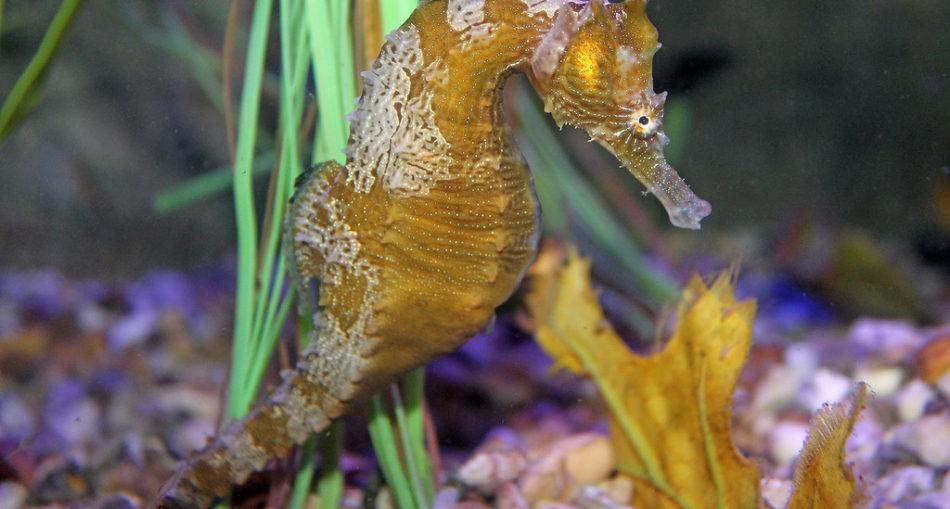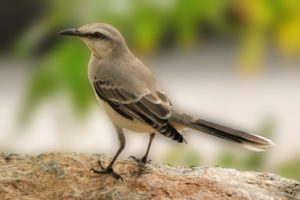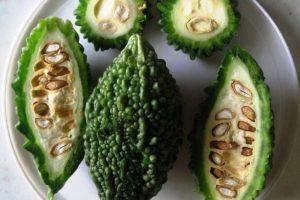Sea Horses are not actually horses that live in the sea, I know, I was quite surprised myself, instead, they are a type of marine fish. Their name derives from the Ancient Greek word “Hippocampus”, híppos (ἵππος) meaning “horse” and kámpos meaning “sea” or “monster”.
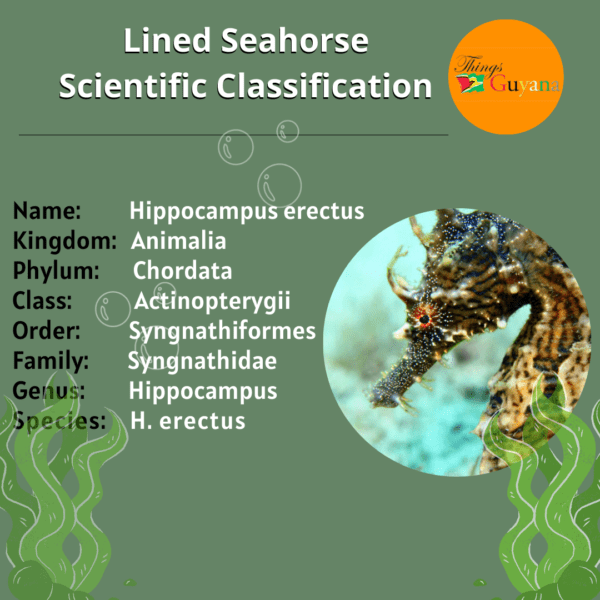
Description
The lined seahorse can range from lengths of 12cm to 17cm. The most giant lined seahorse that has been recorded is 19cm. Males are typically larger and
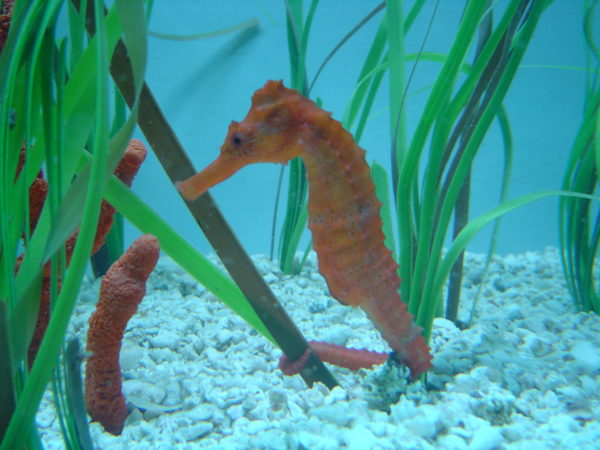
Photo showing a seahorse using its prehensile tail. Photo Source: https://www.freeimageslive.co.uk/free_stock_image/seahorse147jpg
have a longer prehensile tail (tails used for grasping, in this case, the seahorses use its tail to grapes coral, and seaweed). The colours of lined seahorses vary due to many environmental and mental factors; yes, cognitive factors, seahorses can change their colour depending on their stress levels or mood. They can also change their appearance based on their diet. The colour spectrum ranges from black, grey, brown, and green to much brighter colours such as orange, red, and yellow. These seahorses are large and hardy-lined aquatic species, which are deep-chested and robust, and instead of scales, they have acquired a skin that is stretched tightly and armour-like composed of bony plates. It is common for the species to have white lines outlining the neck area—hence its name, “lined seahorse.” The female has larger dorsal fins.
Habitat
The species is found in depths of water up to seventy-three meters. Adults can be found swimming freely in the water column or attached to a stationary object. The habitat of the lined seahorse consists of marine vegetation, such as suspended seaweed, seagrass, sponges, and mangroves. Depending on the season, the species can be found in shallow waters or deep waters along beaches, oyster beds, and banks covered in vegetation. In the winter, the seahorses are more prominent in deeper waters, versus warmer months, where they are usually found in shallow waters attached to vegetation.
The lined seahorse lives in the western Atlantic Ocean as far north as Canada and as far south as the Caribbean, Mexico, and Venezuela.
DIET
The seahorse uses its elongated snout in order to eat its prey, consisting primarily of minute crustaceans, mollusks, and zooplankton. Overall, this process is quick and accurate. A growing lined seahorse may feed continuously for up to ten hours a day, engulfing approximately 3,600 baby brine shrimp. When hunting for prey, the seahorse would change its colour to match the environment to better locate the prey. Once the prey is spotted the seahorse leaps upwards, sucking the prey into its tube-like snout.
Not-So-Fun Fun Fact: Some male seahorses have been reported to eat the fry of other seahorses.
Reproduction
The lined seahorse reproduces sexually, depositing eggs every season, like all other species of seahorses. The male is also the father that takes care of the baby seahorses. The duration of courtship is a few days, and both the male and female may get pale during this time. The male makes his pouch bigger to show that he wants to pursue the girl. The male receives the female’s eggs in his pouch, where they are fertilized and incubated for around two weeks until hatching. The male then ejects a cloud of 100 to 300 tiny, fully developed seahorses into the water from his pouch. Six hundred and fifty eggs can be carried by a single male at one time. The eggs are 1.5 mm in diameter. When the eggs are incubated within the male’s pouch, the embryos are provided oxygen via an extensive capillary system. Through this system, the sodium and calcium levels can be altered in order to maintain homeostasis within the pouch environment. When the embryos are approaching birth, the pouch environment is very similar to the seawater. The young seahorse is 11mm in size and is considered an embryo until it can swim on its own.
Fun Fact: The pouch in which the male collects eggs is called ‘Brood Pouch’
Communication
In order to communicate seahorses would make clicking sounds. During mating, they would alternate their clicking sounds until they embrace each other. Once they have embraced their sounds become one and it is difficult to distinguish between the two.
Take a look at this video to hear the sound the lined seahorse makes – https://www.youtube.com/watch?v=TwA4n7DRvLQ
Fun Facts
- Seahorses have monogamous relationships and will mate for life.
- Despite the fact that their name is also translated to “sea monster” these little guys are such slow swimmers they are more likely to be devoured by a monster than be one. They swim slowly because of their upright position.
- The seahorses have a crown-like bony crest called a coronet
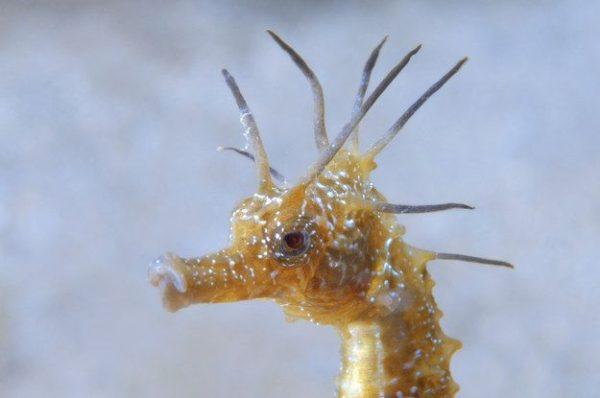
Photo of Cornet of lined seahorse. Photo source: https://www.buzzfeed.com/mrloganrhoades/yall-the-seahorse-is-a-real-thing-and-we-are-all-blessed-wit?utm_term=.to0vX40BL&epik=dj0yJnU9ZURWZkZ1eXZWbEFhT3FlajkwcldHWFNNVno5bFhhcHEmcD0wJm49YVFlSklnMDlXbng3TUstNFczTFhsZyZ0PUFBQUFBR01TV3FJ
located on the backside of their head at the edge of the skull. Each cornet is unique to the seahorse much like fingerprints are to humans.
- Seahorses have the most adorable way of bonding with their partners, every morning they would perform a ritualistic dance in order to sustain their relationship
- A growing seahorse may eat for up to 10 HOURS a day and consume OVER 3000 baby shrimp.
- Seahorses do not have stomachs.
- Seahorses are used in traditional Chinese medicine and are believed to have the ability to cure arthritis, baldness, and even infertility.
Symbolism
In Ancient Greece, the seahorse is closely linked to the sea God, Poseidon, and has been seen as one of the most important water symbols.
References:
- https://kidadl.com/facts/animals/lined-seahorse-facts#:~:text=They%20have%20a%20spineless%20dorsal,objects%20and%20hunt%20for%20prey.
- https://www.softschools.com/facts/animals/seahorse_facts/133/#:~:text=Seahorses%20interact%20with%20each%20other,only%20during%20a%20breeding%20season.
- https://en.wikipedia.org/wiki/Lined_seahorse
- https://pubmed.ncbi.nlm.nih.gov/22360853/#:~:text=Seahorses%2C%20a%20syngnathidae%20fish%2C%20are,%2C%20baldness%2C%20asthma%20and%20arthritis.
- https://symbolismandmetaphor.com/seahorse-spirit-animal-symbolism/#:~:text=For%20the%20Ancient%20Greeks%2C%20the,the%20most%20important%20Water%20symbols.

